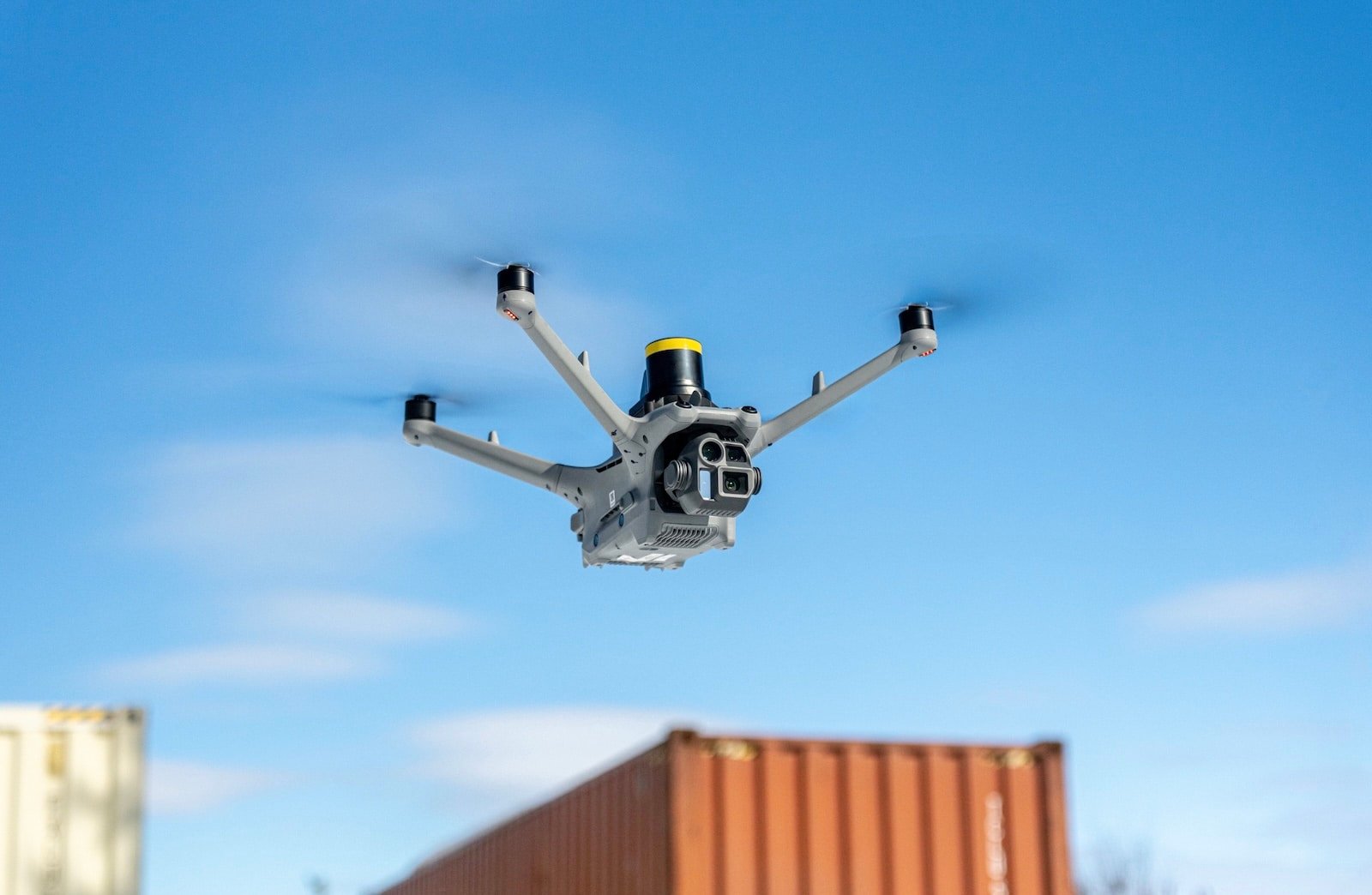AVSS Launches PRS-M4DT: A Revolutionary Safety Solution for DJI Dock 3 and Matrice 4D Drones
On a chilly morning in Canada, AVSS (Aerial Vehicle Safety Solutions Inc.) announced its latest development: the PRS-M4DT, a parachute recovery system specifically designed for the DJI Dock 3. Rolling out alongside variants like the PRS-M4DTEX and FTS-M4DTEX, this system responds to the increasing necessity for enhanced safety measures in drone operations, especially over populated regions. But what implications does it hold for the industry? Let’s delve into the specifics.
A Modular Approach to Drone Safety
The PRS-M4DT is a logical extension of AVSS’s previous models, building on the PRS-M3DT designed for the DJI Dock 2 and adapting it for the Dock 3. It is set to be available through authorized distributors in Q2 2025. This system introduces a parachute mechanic that safely returns malfunctioning drones to the ground, making it essential for operators needing to meet regulations governing flights over people.
The PRS-M4DTEX enhances this with a Flight Termination System (FTS), addressing Europe’s strict Enhanced Containment rules under the EASA MOC 2511 and MOC 2512 standards, aiming for C5 and C6 classifications for DJI M4D and M4TD drones. The standalone FTS-M4DTEX provides a leaner solution focused solely on power termination to prevent flyaways, streamlining air risk mitigation.
AVSS claims the PRS-M4DT and its variants comply with numerous global standards, including FAA regulations for Operations Over People, Transport Canada’s guidelines, and CASA criteria in Australia. If the features perform as expected, this may facilitate quicker approvals for operators globally.

Technical Breakdown: What’s Under the Hood?
The PRS-M4DT is marketed as a plug-and-play system, although more details on its weight and installation requirements remain undisclosed. Given AVSS’s experience with similar products, like the PRS-M350 for the DJI M350 RTK (weighing around 1.5 pounds), it’s anticipated to be lightweight enough to not hinder the M4DT’s payload capacity. Its parachute can automatically deploy in emergencies, leveraging an onboard electronic module linked to the FTS to ensure propulsion is cut, preventing chute entanglements.
The FTS-M4DTEX, designated for European C6 and Enhanced Containment needs, employs an independent geofencing trigger. This mechanism shuts down the drone mid-flight if it crosses a predetermined boundary, a straightforward yet effective solution that prioritizes containment over recovery. In contrast to competitors like Dronavia’s Kronos M3D, which features rapid installation and long-range control, AVSS has yet to outline the triggering range or setup process.
All three systems are compliant with ASTM F3322 standards for parachute recovery, reflecting thorough testing for deployment reliability. However, real-world performance remains uncertain until availed hands-on data, including drop tests or failure rates—AVSS’s collaboration video with Billy Kyle provides some insight, albeit in a promotional context.
Industry Context: Why Now?
AVSS’s introduction of the PRS-M4DT comes as the drone industry approaches a crucial juncture, with trends such as Urban Air Mobility, Drone as a First Responder, and beyond-visual-line-of-sight (BVLOS) operations elevating the significance of safety technologies. The DJI Dock 3, being a center for automated missions, underscores the requirement for fail-safes to manage potential malfunctions without human intervention. In the U.S., new FAA guidelines dictate risk management measures for operations over people, while Europe’s EASA mandates FTS for containment effective January 2023.
This isn’t AVSS’s first innovation; since 2017, they have specialized in retrofitting safety enhancements for various DJI models. Their 50+ dealer network signifies a solid market presence, even among competitors like Dronavia, which offers alternative solutions targeting compliance goals.
Market Implications: Who Benefits?
For enterprise pilots, the PRS-M4DT series presents a compliant upgrade without the need to alter existing DJI equipment. Priced at around $3,600, it serves as a cost-effective alternative when compared to more expensive proprietary systems. Meanwhile, resellers are poised to benefit from the delivery synchronization with peak drone usage seasons in Q2 2025. Insider support from AVSS hints at future collaborations with manufacturers, possibly integrating this technology into upcoming dock systems.
However, challenges remain in the crowded retrofit market where AVSS must differentiate itself. If the FTS’s implementation proves less user-friendly than competitors’ offerings or deployment fails under adverse conditions (e.g., winter climates), demand may stagnate. Operators in less regulatory environments might opt for simpler, budget-friendly safety solutions, avoiding the cost associated with these advanced systems.
Regulatory Lens: Overcoming Barriers
Compliance is pivotal in this landscape. The FAA’s classification system for drones necessitates evidence of minimal risk to people on the ground, which parachutes can provide—given they deploy reliably at lower altitudes. Similarly, EASA’s MOC 2511 emphasizes the necessity for an autonomous FTS, a target the PRS-M4DTEX aims to meet by eliminating manual power controls. The regulations in Canada and Australia follow suit, prioritizing containment measures to avert disasters. The JARUS SORA framework emphasizes the need for thorough risk management, especially for BVLOS or urban flights.
Nonetheless, skepticism persists among regulators, who will require test results from AVSS, including terminal velocity assessments or geofence breach evaluations. Historical incidents regarding parachute failures or FTS delays suggest that these systems’ real-world reliability must be rigorously established.
A Step Forward, but Questions Persist
The PRS-M4DT series signals progress in the drone safety arena, serving as a bridge between innovative technology and regulatory standards. For users of the DJI Dock 3, it provides a practical instrument to maintain mission compliance in increasingly congested urban airspaces. The focus on Europe’s stringent C5/C6 regulations could also support the industry’s shift towards universal containment standards, enhancing interoperability across regional operations.
Yet, the true test lies in operational effectiveness. Will these systems withstand challenges presented by extreme weather? Can the FTS react promptly enough in the event of an anomaly? Although AVSS boasts expertise in this realm, success will ultimately determine if this technology is transformative or merely additional equipment. As we approach Q2 2025, both operators and regulatory bodies will be paying close attention.
Conclusion
In summary, AVSS is doubling down on its established approach: adapt to regulatory shifts while promoting quick and effective safety solutions. Their alignment with DJI’s ecosystem keeps them significant, but the essential question is whether they can outrun competitors when it comes to reliability and user-friendliness. If the PRS-M4DT measures up, it might set new standards for dock-based safety systems; if not, it may serve only as a modest enhancement in the toolkit.













